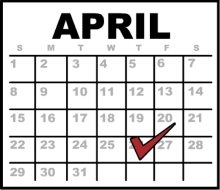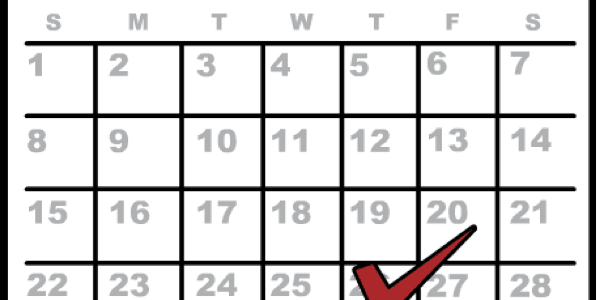12 Essentials Every Classroom Must Have for Autism Success

What is the communication “culture” in your school or your program or clinic? How does the whole environment support individual students?
I’ve been doing a consultation with a school district where we have established the goal of helping their classrooms become more “autism communication friendly.” With that goal in mind, it makes so much sense to me to take a step backward and focus on the communication culture in the whole classroom, or whole program. Here’s why. When the whole environment is set up to be “communication friendly,” the number of individual needs dwindles. (A bonus is that lots of other students who don’t have this specific diagnosis benefit from that communication support, too).
Students with autism can achieve great success in environments that help them succeed. How does that work? Settings that are “autism communication friendly” provide a variety of little things that result in big positive changes in student participation. Of course, there will be variations, depending on age and skill level of students. Classrooms will have differences. But these essentials are essential. We have learned so much about what students on the autism spectrum need to be successful. One thing that we know is that the majority of students with Autism Spectrum Disorders (and lots of other students, too) are visual learners. You’ll see lots of visual tools on my essentials list. The problem is that we don’t always use what we know. That’s human nature. So here’s my challenge and here’s my list.
12 Essentials
(1) Camera This can be one of your most powerful communication tools. They are so common now. You probably have a camera on your phone that you carry in your pocket. Teachers can take pictures or you can teach students to use the cameras on their own phones. Take pictures of everything. Use them in the phone or print the pictures as needed. Use your photos for conversation starters, demonstration tools or reminders to help students remember what to bring to school tomorrow.

(3) Schedule The daily schedule has finally become one of the most used visual tools. That’s because they work really well to help students follow their daily routines. Everyone benefits from knowing what is going to be happening today.
(4) Predictable routine Predictable does not mean rigid. Students will follow routines, demonstrate less stress and exhibit better behavior when they know what to expect. Cameras, calendars and schedules are some of the really useful tools to help students understand when something expected is changing or when something new is going to occur. Rigid means nothing changes. Predictable means giving enough information so they know what to expect.
(5) Quiet spot (not punishment) Sometimes things get too fast, too noisy or just plain too much. There can be many causes. Those are the times when some of our students start “bouncing off the walls,” “melting down,” or showing us in many ways that things are not going well. This is when adults naturally start talking too much to try to calm things down. Instead, a goal is to teach students to use a “quiet spot” which is a designated location that will help them regroup. Use something visual to help get them there. That quiet spot can have a special name and may be equipped with some items that promote relaxation. This should not be used for punishment. It’s an opportunity for calming.
(6) Visual tools Pictures, objects, written language and anything else VISUAL is used to support communication. The calendar and schedule are just two visual tools. A supportive environment will provide a variety of other visual supports to assist students in multiple ways for successful participation.
(7) Note pad & pencil No matter how much pre-planning you do, stuff happens. The temptation during those times is to try to talk it through. The problem with that strategy is that it often doesn’t work. Especially when students are confused, upset or when they don’t understand, that pencil & paper can become a lifesaver.
(8) Proper work environments Individual students may have specific needs. Think about sensory needs related to things such as sound, sight, or touch. Size or shape of furniture, location of activities, or actions of other students can be significant. What distractions or disturbances can affect a student’s success?
(9) Organized work spaces Label the environment so students know where to go, what to do and where things belong. Make sure work places contain the correct materials or that students know appropriate procedures to solve problems in work settings.
(10) Rules What are the rules? Everyone needs to know. Too many is not good. Some are location specific. Identify the important ones. Post them. Review them.
(11) Timer Time management is difficult for lots of students. Transitions can be challenging. When do you need to stop? When do you prepare for change? How long is this activity going to go on and on? Timers help. There are many kinds. Visual timers like the Time Tracker or the Time Timer, kitchen timers, phones or watches with a timer function or timers on an iPad or computer are all great options.
(12) Effective communication partners Staff who are committed to using multiple forms of communication help students achieve success. SHOWING instead of TELLING makes a huge difference for student success.
A word of caution
It’s easy to eliminate things from this list of essentials with the excuse that students are too high or low functioning or too young or too old. Another complaint is that something on the list is not “appropriate” for some reason. Sometimes strategies are declared unnecessary because the communication partners don’t feel like doing them. Just know that all these essentials work really well for student success.
The Teaching Students with Autism community on edWeb has grown to over 6,000 educators looking for resources and ideas for working with students with autism. The collaborative community allows educators to share information and connect with each other to support the needs of their students. Join the community.
Browse through over 30 autism webinars and blog posts on edWeb to learn more and help raise awareness about autism.



Comments are closed.